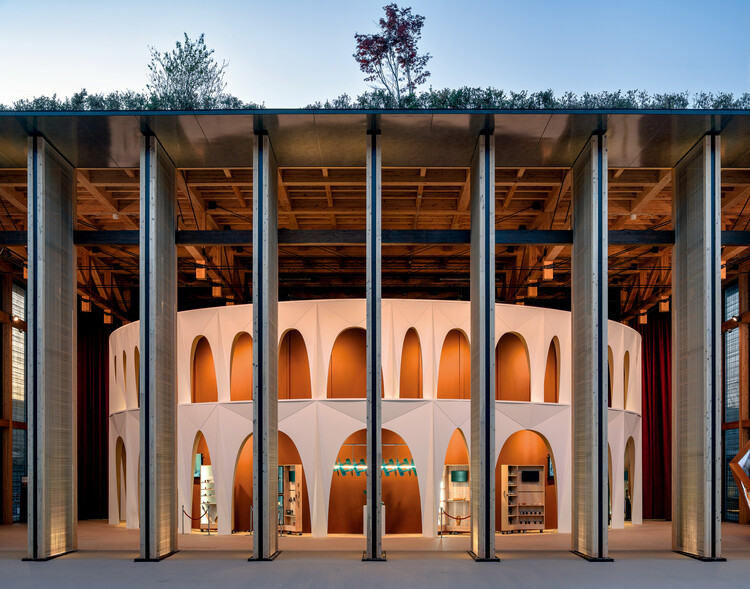 The Italian Pavilion Expo 2025 Osaka / Mario Cucinella Architects + Yoshiki Matsuda Architects. Image © Duccio Malagamba
The Italian Pavilion Expo 2025 Osaka / Mario Cucinella Architects + Yoshiki Matsuda Architects. Image © Duccio Malagamba
Share
Share
Or
https://www.archdaily.com/1035864/a-look-at-the-45-award-winning-pavilions-of-expo-2025-osaka
About a month after the closing of Expo 2025 Osaka, the designs and constructions presented at the world’s fair remain as a legacy. While the Bahrain Pavilion, designed by Lina Ghotmeh Architecture, drew particular attention this year for receiving double recognition, it was one among many awarded projects. During the awards ceremony held on the penultimate night of the event, a total of 45 awards were presented among 165 participating countries. The Official Participant Awards are granted according to pavilion size and type, recognizing excellence in Architecture and Landscape (for self-built pavilions only), External Design (for module pavilions only), Exhibition Design, Theme Development, and Sustainability. The recipients were selected by an international jury of nine experts who visited all national and thematic pavilions during two evaluation sessions in May and October 2025. The following overview presents all 45 pavilions distinguished in the five categories of the Official Participant Awards.

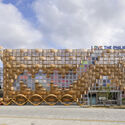

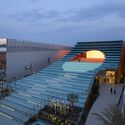
 + 15
+ 15
Pavilions Awarded in the Architecture and Landscape Category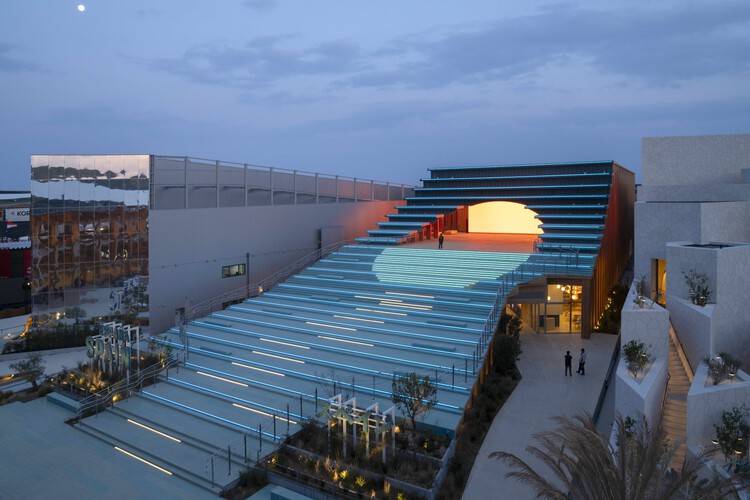 Spanish Pavilion Expo Osaka 2025 / ENORME Studio + Smart and Green Design + EXTUDIO. Image © ArchExist
Spanish Pavilion Expo Osaka 2025 / ENORME Studio + Smart and Green Design + EXTUDIO. Image © ArchExist KSA Pavilion Expo 2025 Osaka / Foster + Partners. Image © Nigel Young / Foster Partners
KSA Pavilion Expo 2025 Osaka / Foster + Partners. Image © Nigel Young / Foster Partners
According to the Expo 2025 Master Plan and Design Guidelines, the event distinguishes between three main types of pavilions for official participants. Type A self-built pavilions are constructed by participants on plots equipped with basic utility conduits provided by the organiser. Participants are responsible for the design, construction, installation, and later dismantling and restoration of their sites. The Architecture and Landscape Awards at Expo 2025 recognized Type A pavilions that demonstrated strong integration between architectural form, spatial composition, and the surrounding environment. In the category of Self-Built Pavilions – Type A (larger than 1,500 m²), Foster + Partners’ Saudi Arabia Pavilion received the Gold Award, followed by the Spanish Pavilion, designed by ENORME Studio, Smart and Green Design, and EXTUDIO, with Silver, and the United Arab Emirates Pavilion, an interdisciplinary collaboration led by Earth to Ether Collective, with Bronze. Among Self-Built Pavilions – Type A (smaller than 1,500 m²), Lina Ghotmeh Architecture’s Bahrain Pavilion earned the Gold Award, while Apropos Architects’ Czechia Pavilion and Manuel Herz Architects’ Switzerland Pavilion received Silver and Bronze, respectively.
Related Article Designing the Future, Again: What the 55-Year Return of the World Expo to Osaka Reveals Pavilions Awarded in the External Design Category
Type B+X pavilions, also known as Module Pavilions, are organiser-built structures that participants rent and adapt. While the building shell, designed within the Expo Masterplan by Sou Fujimoto Architects, is provided by the organiser, participants are free to define their exhibition content and customize the interior and exterior design. The External Design Awards acknowledged Module Pavilions that excelled in façade quality, structural expression, and contribution to the overall visitor experience. Angola received the Gold Award, Algeria the Silver, and India the Bronze, each recognized for innovative exterior treatments that combined aesthetic impact with contextual sensitivity and sustainable design principles.
Pavilions Awarded in the Exhibition Design Category The Philippine Pavilion at Expo Osaka 2025. Image © Hotaka Matsumara
The Philippine Pavilion at Expo Osaka 2025. Image © Hotaka Matsumara Austria Pavilion at Expo Osaka 2025 / BWM Architects. Image Courtesy of Expo Austria
Austria Pavilion at Expo Osaka 2025 / BWM Architects. Image Courtesy of Expo Austria
The awards in the Exhibition Design category celebrated creativity, spatial innovation, and narrative coherence across all pavilion types. Alongside Type A and Type B+X pavilions, the competition also included Shared Pavilions (Type C), which were organised under three thematic focuses derived from the Expo’s curatorial concept. In Self-Built Pavilions – Type A (larger than 1,500 m²), the China Pavilion, designed by China Architecture Design Group (CADG), earned the Gold Award, followed by Indonesia by Raden Bagus Diwangkoro and Canada by Robert Lepage with Silver and Bronze, respectively. Among Self-Built Pavilions – Type A (smaller than 1,500 m²), Poland by interplay architects received Gold, while the Philippines Pavilion, designed by Carlo Calma Consultancy Inc., and Austria by BWM Architects earned Silver and Bronze. In the Module Pavilions (Type B+X) category, Peru took Gold, Vietnam Silver, and Cambodia Bronze. The Shared Pavilions (Type C) were recognized across three themes: in Saving Lives, Panama, Ukraine, and Pakistan received Gold, Silver, and Bronze; in Empowering Lives, Kyrgyzstan, Kenya, and Yemen were honored; and in Connecting Lives, Benin earned Gold, followed by Armenia and Guyana.
Pavilions Awarded in the Theme Development Category Uzbekistan Pavilion at Expo Osaka 2025 / Atelier Brückner. Image © Josef Šindelka
Uzbekistan Pavilion at Expo Osaka 2025 / Atelier Brückner. Image © Josef Šindelka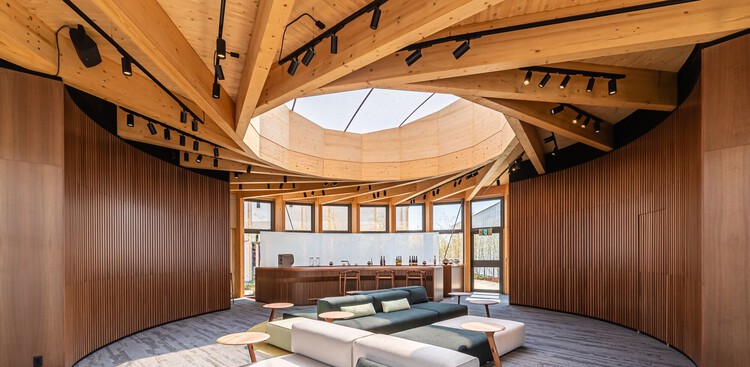 German Pavilion at Expo 2025 Osaka / LAVA Architects. Image © Hotaka Matsumara
German Pavilion at Expo 2025 Osaka / LAVA Architects. Image © Hotaka Matsumara
Finally, the Theme Development Awards highlighted pavilions that most effectively conveyed conceptual depth and alignment with the Expo’s overarching narrative. In Self-Built Pavilions – Type A (larger than 1,500 m²), Mario Cucinella Architects and Yoshiki Matsuda Architects’ Italian pavilion received the Gold Award, with Germany by LAVA Architects and Belgium, designed by Carré 7, earning Silver and Bronze. Among Self-Built Pavilions – Type A (smaller than 1,500 m²), Uzbekistan by Atelier Brückner won Gold, followed by Serbia by Aleatek Studio and Ireland, designed by the Government of Ireland’s Office of Public Works (OPW). In the Module Pavilions (Type B+X) category, Jordan received Gold, Brazil Silver, and Chile Bronze. For the Shared Pavilions (Type C), Saving Lives recognized Gabon, Croatia, and Bhutan; Empowering Lives honored Ghana, North Macedonia, and Tonga; and Connecting Lives celebrated Kazakhstan, Jamaica, and Djibouti with Gold, Silver, and Bronze distinctions, respectively.
Expo Osaka 2025 Sustainability Awards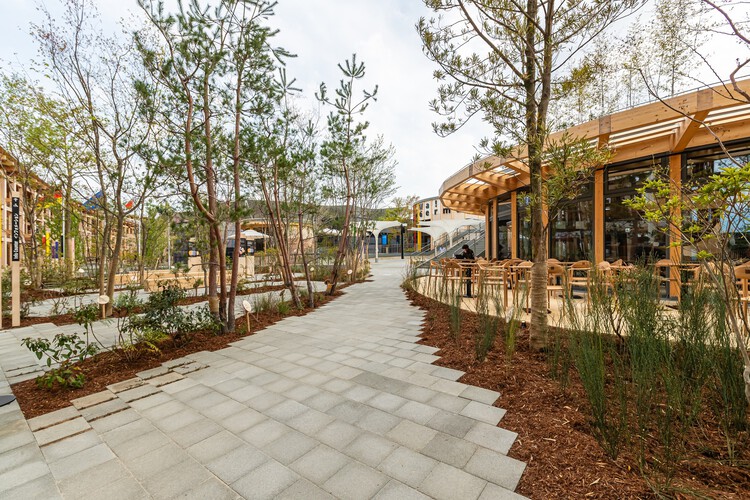 German Pavilion at Expo 2025 Osaka / LAVA Architects. Image © Hotaka Matsumara
German Pavilion at Expo 2025 Osaka / LAVA Architects. Image © Hotaka Matsumara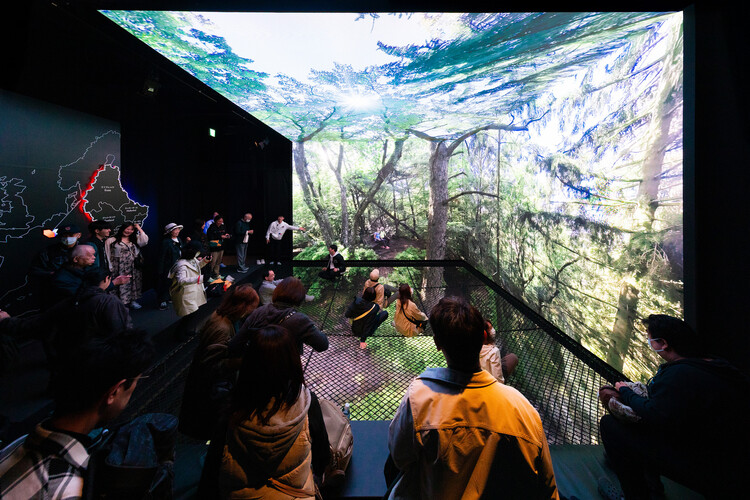 Luxembourg Pavilion Expo 2025 Osaka / STDM architectes. Image © Vincent HECHT, Wataru AOYAMA
Luxembourg Pavilion Expo 2025 Osaka / STDM architectes. Image © Vincent HECHT, Wataru AOYAMA
Four sustainability awards were presented to pavilions participating in Expo 2025. In the Self-Built Pavilions – Type A category, LAVA Architects’ German Pavilion was recognized among projects larger than 1,500 m², while STDM architectes’ Luxembourg Pavilion won in the category of pavilions under 1,500 m². The German Pavilion centered on the theme of the circular economy, using round wooden structural elements to embody principles of returning consumable goods to the economic cycle, achieving zero waste, and minimizing resource consumption. Circularity also informed the design of the Luxembourg Pavilion, conceived to reduce resource and energy use both during operation, through efficient air-conditioning, lighting, and equipment, and in the choice of materials, accounting for embodied or “grey” energy. In the Module Pavilions (Type B+X) category, Jordan’s Pavilion received the award for its design inviting visitors to experience the nation’s history, craftsmanship, and culture through a comprehensive circular approach applied from planning to execution. In the Shared Pavilions (Type C) category, the Republic of Equatorial Guinea was recognized for its coherent exhibition message emphasizing the balance between progress, environmental preservation, and cultural identity.
In addition to these 45 Official Participant Awards, the Bureau International des Expositions also awards BIE Medals to recognise organisations and individuals who have made extraordinary contributions to the success of the Expo, as well as the BIE Cosmos Prize. Other recent recognitions in architecture and design include the 20 winning projects of the 2025 Holcim Foundation Awards, honoring sustainable design and construction across five global regions, the 15 winners of the eighth edition of The Architecture Drawing Prize, and the awarding of the 2025 RIBA Stirling Prize to the Appleby Blue Almshouse, a social housing development for older residents in London. The EUmies Awards, organized by the Fundació Mies van der Rohe and the European Commission, also announced 410 nominated works from 40 countries and 143 regions across Europe for its 19th cycle. Furthermore, Egyptian architect Abdelwahed El-Wakil was honored with the 2025 Tamayouz Lifetime Achievement Award, while Mexican architect Mario Schjetnan and Grupo de Diseño Urbano were awarded the 2025 Oberlander Prize for Landscape Architecture.
We invite you to check out ArchDaily’s comprehensive coverage of Expo Osaka 2025.

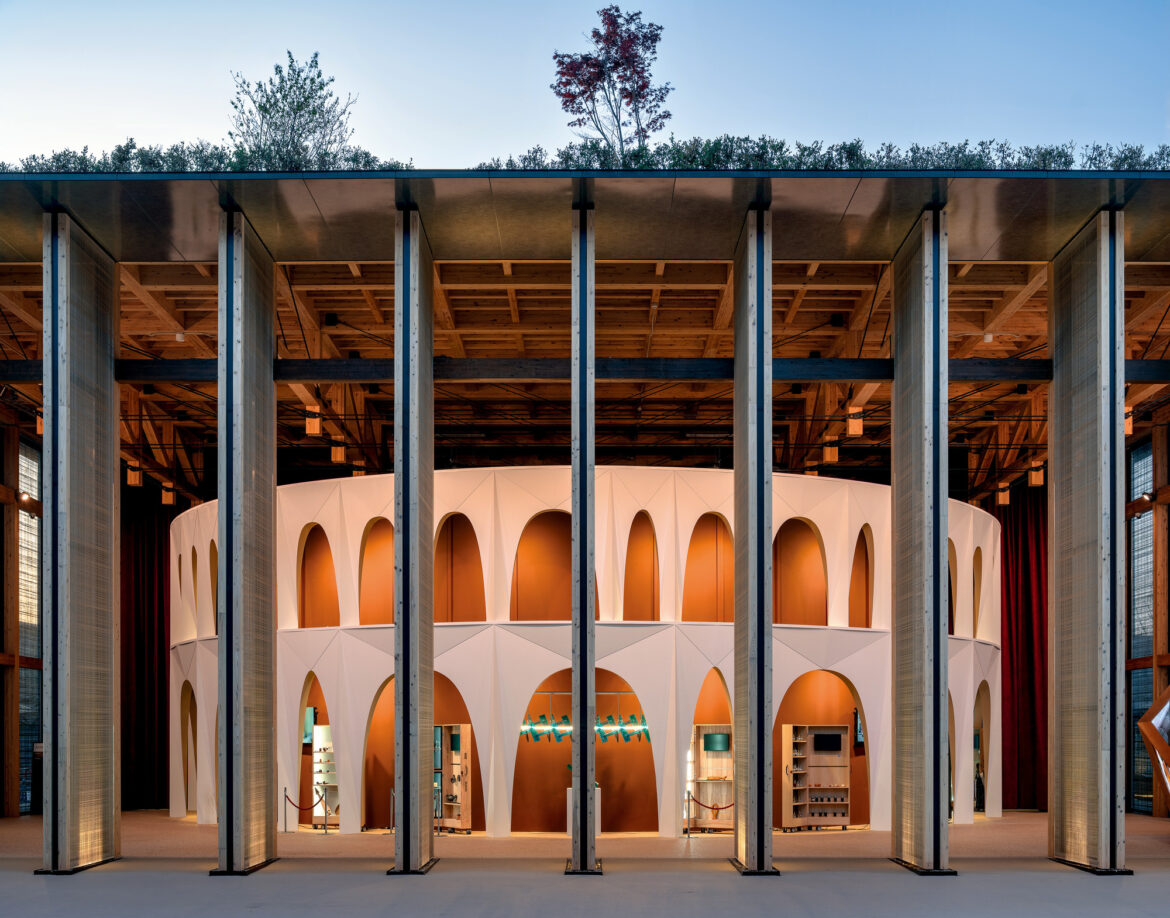
AloJapan.com